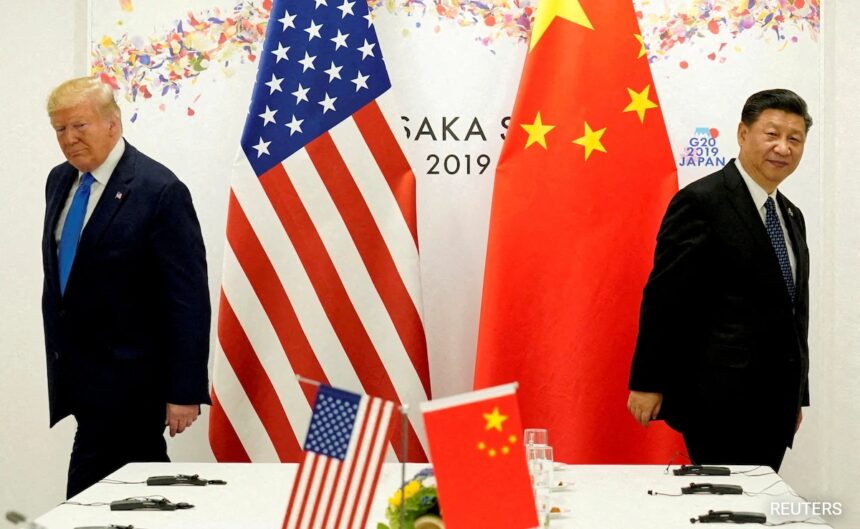The ongoing trade war between the United States and China has escalated into a dangerous standoff with no clear winners in sight. President Donald Trump’s administration has been imposing mounting tariffs on Chinese goods in an attempt to force Beijing into a deal, but it appears that China may have more leverage in this situation than previously thought.
Despite the US being a crucial market for China’s manufactured goods, experts warn against underestimating Beijing’s ability to resist coercive tactics. China’s centralized political control, diversified export markets, and control over strategically important materials like rare earth metals give them ample room to negotiate with the US.
The complexity of the US-China trade relationship was highlighted recently when the Trump administration exempted smartphones, laptops, and TVs from new tariffs. This move underscores the interdependence between the two economies and the challenges faced in trying to pressure China into a deal.
In the fiscal year 2024, China had a trade surplus of nearly $300 billion with the US, with a significant portion of its exports going to America. While the conventional wisdom suggests that countries with trade deficits hold more power in trade conflicts, the reality is more nuanced. The US relies on China for a range of products, including electronics and machinery, which gives China leverage in negotiations.
Some of America’s biggest companies, such as Apple and Tesla, depend on production in China and would be severely impacted by steep tariffs. On the other hand, China’s imports from the US are largely focused on agricultural products, which are easier to replace from other sources.
Additionally, the US economy is driven by consumer spending, and high taxes on popular goods could lead to inflation and economic consequences. Trump’s recent decision to pause most reciprocal taxes for 90 days following market turmoil underscores the power of American consumers in shaping trade policy.
As the trade war continues, China has been reducing its reliance on American markets by rerouting trade through Southeast Asian countries and seeking new partnerships in regions like the EU and India. President Xi Jinping’s recent overseas trip to Vietnam, Malaysia, and Cambodia showcases China’s efforts to diversify its trade relationships.
In contrast to the US, China’s autocratic system gives the ruling Communist Party more leeway to weather economic pressures and stimulate the economy if needed. Beijing’s control over rare earth production also provides a critical point of leverage, as seen in their recent halt of rare earth exports essential for modern manufacturing.
In conclusion, the US-China trade standoff is a complex and evolving situation with no clear resolution in sight. Both countries have strengths and vulnerabilities that need to be carefully navigated in order to reach a mutually beneficial agreement.








